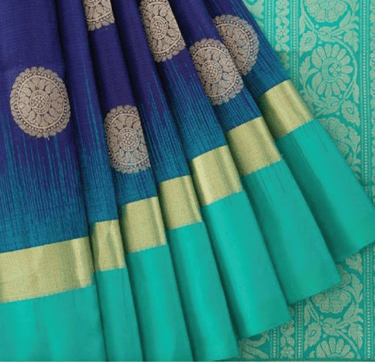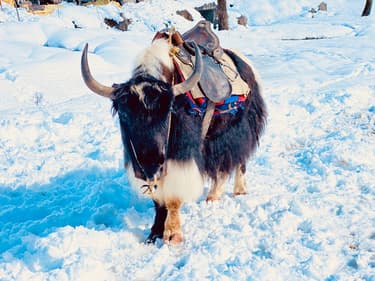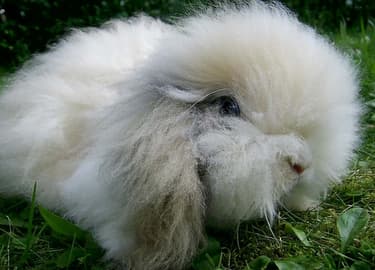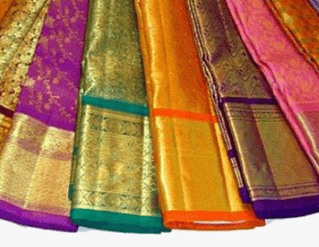Embibe Experts Solutions for Chapter: Fibre to Fabric, Exercise 1: Exercise
Embibe Experts Science Solutions for Exercise - Embibe Experts Solutions for Chapter: Fibre to Fabric, Exercise 1: Exercise
Attempt the free practice questions on Chapter 3: Fibre to Fabric, Exercise 1: Exercise with hints and solutions to strengthen your understanding. THINK ABOVE AND BEYOND SCIENCE PRACTICE BOOKS solutions are prepared by Experienced Embibe Experts.
Questions from Embibe Experts Solutions for Chapter: Fibre to Fabric, Exercise 1: Exercise with Hints & Solutions
The art of silk production is called sericulture. Sericulture provides gainful employment, economic development, and an improvement in the quality of life for people in rural areas, and thus plays an important role in anti-poverty programmes and prevents rural people from migrating to urban areas in search of work. Silk is a lustrous protein fibre that can be used as a textile fibre. Silk sarees, bedding, silk pillows, table cloths, wall hangings, and other items are made from it.

From the above comprehension, it is clear that silk has many uses. Now explain the process of rearing silkworms in sericulture.
In a classroom, a teacher was discussing the properties and applications of wool fibre. The teacher discussed how it is warm and comfortable to wear, wrinkle resistant, loses strength when wet, has a low lustre, is expensive, and is damaged by chlorine bleach. The teacher also explained how wool fibres are used to make woollen clothing, blankets, boots, saddle cloths, horse rugs, seat covers, and other items. During the class, one of the students questioned about the extraction of wool fibre from sheep. The teacher then said, "This is your homework."

Can you help the students in completing their homework by responding to the following question:
Write the various steps involved in getting wool fibre from sheep?
Shree went shopping with her mum. Shree's mother noticed a saree showroom and went in to buy a saree. The mother liked a saree, but it was quite expensive, to which the salesman said that the saree was made of pure silk. But Shree's mother had doubt. In order to clarify her mother's doubt, the salesman performed a simple procedure to verify the purity of the fabric.
Could you think of the simple procedure used to determine the fabric's purity?

Shanaya went on a nature trip with her family. On her way to Spiti valley, nearby a monastery in Kaza, she saw yaks which were an attraction to the eyes due to their safari rides.

Shanaya was mesmerised to see the decorated yaks with their long hair. Explaining the uses of Yak fibres apart from rides, her father told her that yak fibres are used for various purposes like making wool, ropes and tents. For over a thousand of years the people of the Himalayan regions used these fibres for clothing and blankets.
Shanaya got to understand that Yak provides us with fibres which could be used for making winter clothes. She did not understand how these fibres are useful for yak itself. Help shanaya to understand how the fibres are useful for yak itself.
What will happen if these yaks have to live in desert area?
Wool is a type of fabric derived from the hairs of various animals. Wool is obtained from the fleece of animals like sheep, goat, yak etc. It is the first animal fibre to be made into cloth. Animal fibre is processed to wool by undergoing several processes like shearing, scouring, grading and sorting, carding, dyeing, and yarn making. Woollen yarn is made from wool. Wool is used to make a variety of clothing, including high-end suits. Wool has been used for blankets, horse rugs, saddle cloths, carpeting, insulation, and upholstery in addition to clothing. Wool felt is used to cover piano hammers and to absorb odours and noise in heavy machinery and stereo speakers.

You've learned about the uses and origins of wool. Answer the following question: How does the hair on animals' bodies, such as sheep, keep them warm?
We wear cotton clothes during summer as cotton absorbs sweat from the body, exposing it to the atmosphere for easy evaporation. Cotton fabric absorbs sweat and helps the body cool down during the summer because we sweat more.

During the winter, people wear woollen clothing in various forms, such as sweaters, tops, hats, socks, shawls, and so on, because woollen clothing keeps our bodies warm by absorbing heat.

From the above understanding, give the reason for following:
Why can a cotton garment not keep us as warm in winter as a woollen sweater?
Rajesh went to a farm where an animal had been raised for its fur. When he noticed a flock of bunnies, he was surprised. The farmer also informed him that this is among the best breeds of rabbit.
He noticed that this rabbit is really different from other rabbits he has generally seen. He had previously seen a rabbit, but that one had fur that was extremely short.
Answer the following questions:
a) What is selective breeding?
b) Explain how selective breeding could be used to breed rabbits with really fluffy ears.

Priya is in seventh grade and his elder brother is in college. There is a Saree draping competition at his brother's college and Priya went to the campus with her elder brother to witness the competition. While present at the event she noticed a girl wore a beautiful Saree. Priya was told by his brother's friend that the saree was made of silk and also informed her that it is too expensive and was once considered as a symbol of royalty.
Priya wanted to know more about this silk fabric, so she asked the following questions to his brother and his friends:
a) Name the source from which the silk is obtained.
b) Why was silk considered a symbol of royalty?
c) In which country was silk developed first? When did silk-making reach India, and how?

